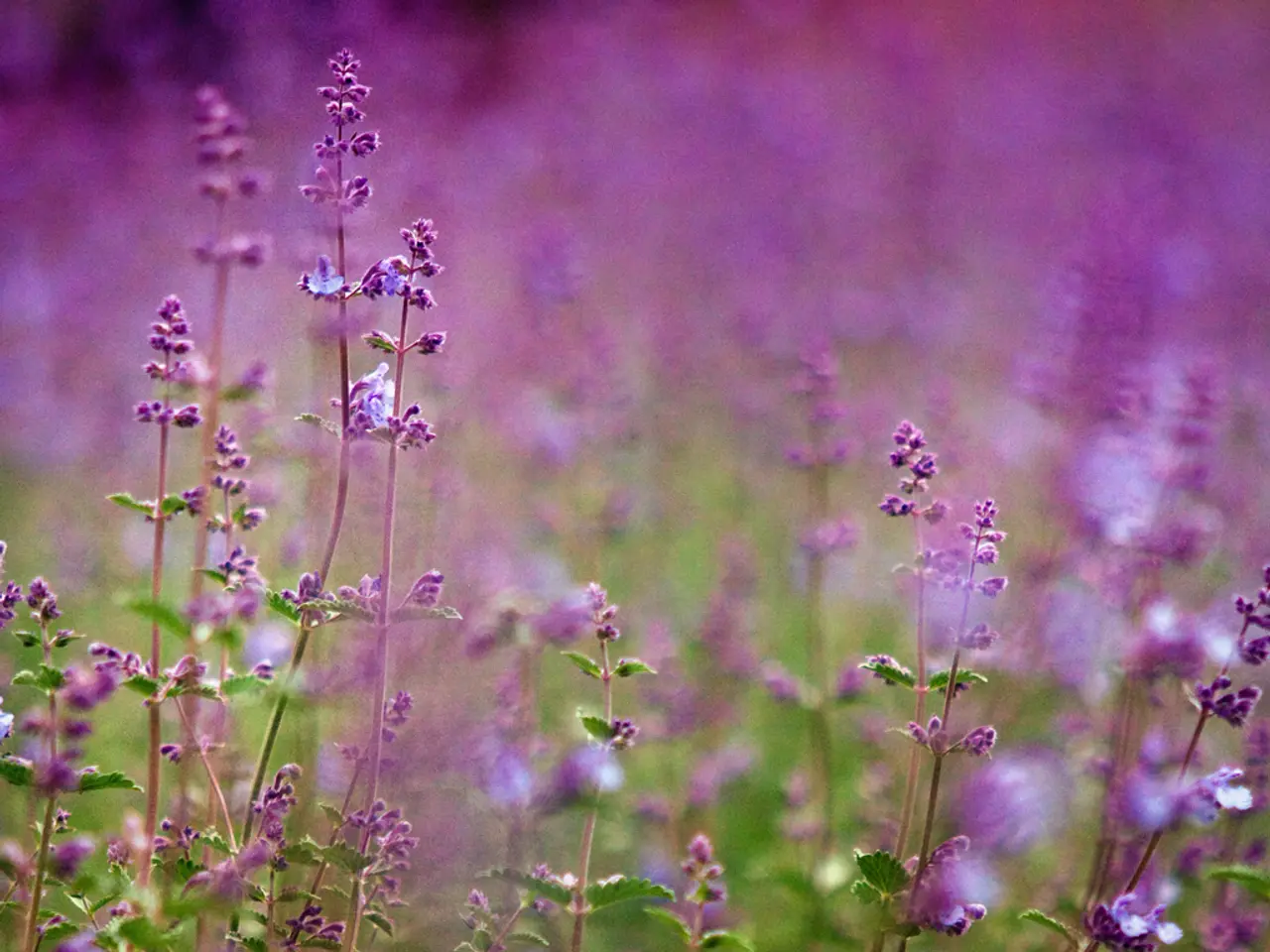Explore Five Varieties of Lavender for Stunning Aroma and Attractive Blossoms
In the world of fragrant and visually appealing plants, lavender stands out as a popular choice for many gardeners. Different types of lavender vary primarily in their climate and soil preferences, appearance, and scent, which influence how well they perform in your garden based on local conditions.
English Lavender (Lavandula angustifolia), commonly referred to as "true" lavender, thrives in cooler summer temperatures and well-drained soils. It is widely favored for its fragrant flowers, often used for drying and attracting pollinators, but may struggle in very hot or humid climates. Varieties such as 'Hidcote' and 'Munstead' are popular choices for English lavender, with the latter's heirloom seeds available for purchase. English lavender is also known for its long stems, making it ideal for cut flower arrangements and craft projects.
French Lavender (Lavandula dentata) is better suited to warmer areas with moderate winters. It prefers well-drained soil and is often grown in containers or raised beds. French lavender typically starts blooming in mid to late summer and is known for its compact varieties suitable for cottage gardens. The 'Royal Anouk' and 'Royal Crown' varieties are unique takes on traditional French lavender shrubs, perfect for container gardening or landscape use, respectively.
Spanish Lavender (Lavandula stoechas) is adapted for hot, dry regions and can tolerate drought and high humidity. It grows well in poorer, well-drained soil and is disease resistant, making it ideal for warm climates with prolonged dry spells. Spanish lavender has a distinct pine-like fragrance.
Portuguese or Spike Lavender (Lavandula latifolia) is heat-tolerant and thrives in dry, warm summer conditions with minimal moisture. It has broader leaves than other types and is prized for attracting beneficial insects and bees. It performs well in dry soils and is commonly used in xeriscaping (low water use landscaping).
When choosing the right lavender for your garden, consider the following factors:
- Soil: Lavender prefers well-drained soils, often sandy or rocky. Poor or alkaline soils suit lavender well generally. If your soil retains moisture, improve drainage or consider containers.
- Summer Temperatures: If you have cooler summers, English lavender is ideal; for warm to hot summers, French, Spanish, or Portuguese lavender varieties are better suited.
- Moisture Levels: For dry or drought-prone areas, Spanish and Portuguese lavenders are most drought tolerant and suitable. English lavender requires more moderate moisture and good drainage to avoid root rot.
Lavandin plants (Lavandula x intermedia) are a type of hybrid created by crossing English lavender with another species. They are celebrated for their robust growth habit, disease resistance, and overall vigor, with many varieties considered to be the most fragrant of lavender plants. The 'Grosso' variety is a common lavandin choice.
With over fifty different types of lavender plants, there's a perfect fit for every garden. French lavender blooms in mid to late summer and seeds and plants are commonly available at local nurseries each spring. Spike lavender seeds can be purchased from Eden Brothers. By matching the lavender type to your climate zone, soil type, and irrigation availability, you can create a beautiful, fragrant, and thriving lavender garden.
Home-and-garden enthusiasts may find a suitable lavender variety for their lifestyle by understanding the specific preferences of various types. For cooler climates and well-drained soils, English Lavender (Lavandula angustifolia) is the ideal choice, offering fragrant flowers, long stems for cut flower arrangements, and versatile garden uses. Alternatively, French Lavender (Lavandula dentata) thrives in warmer areas with moderate winters and is suited for container gardening, providing compact varieties suitable for cottage gardens. Meanwhile, Spanish Lavender (Lavandula stoechas) is adaptable to hot, dry regions and can tolerate drought and high humidity, while Portuguese or Spike Lavender (Lavandula latifolia) thrives in dry, warm conditions and is popular for its ability to attract beneficial insects.




